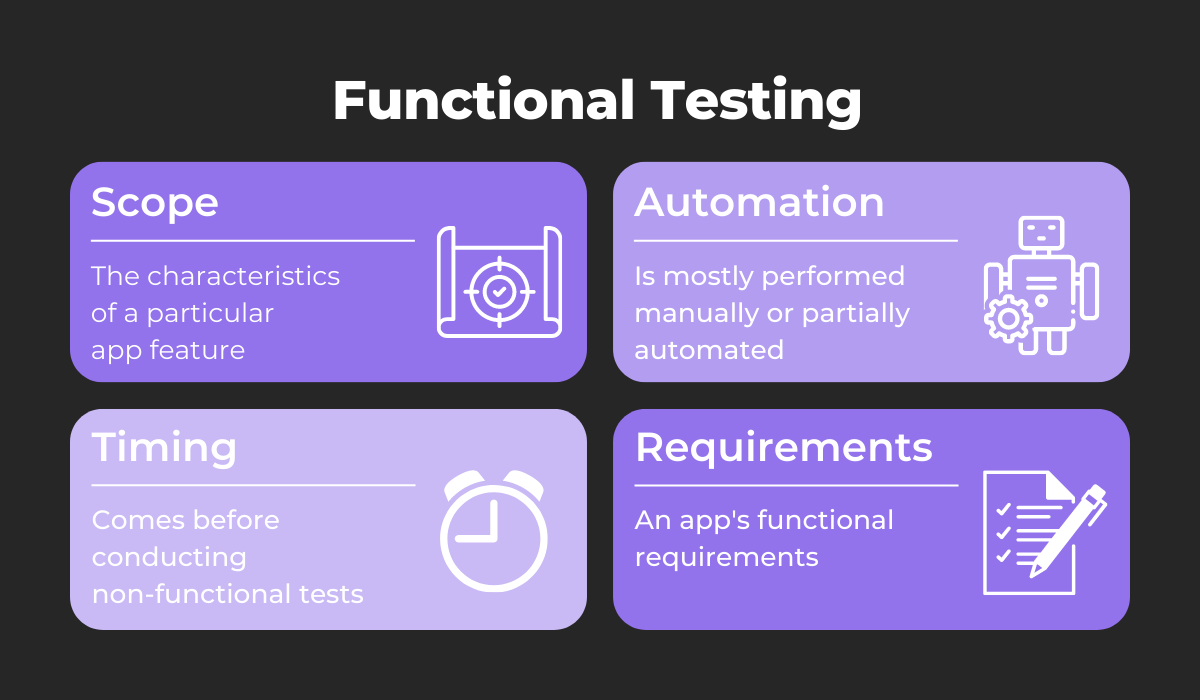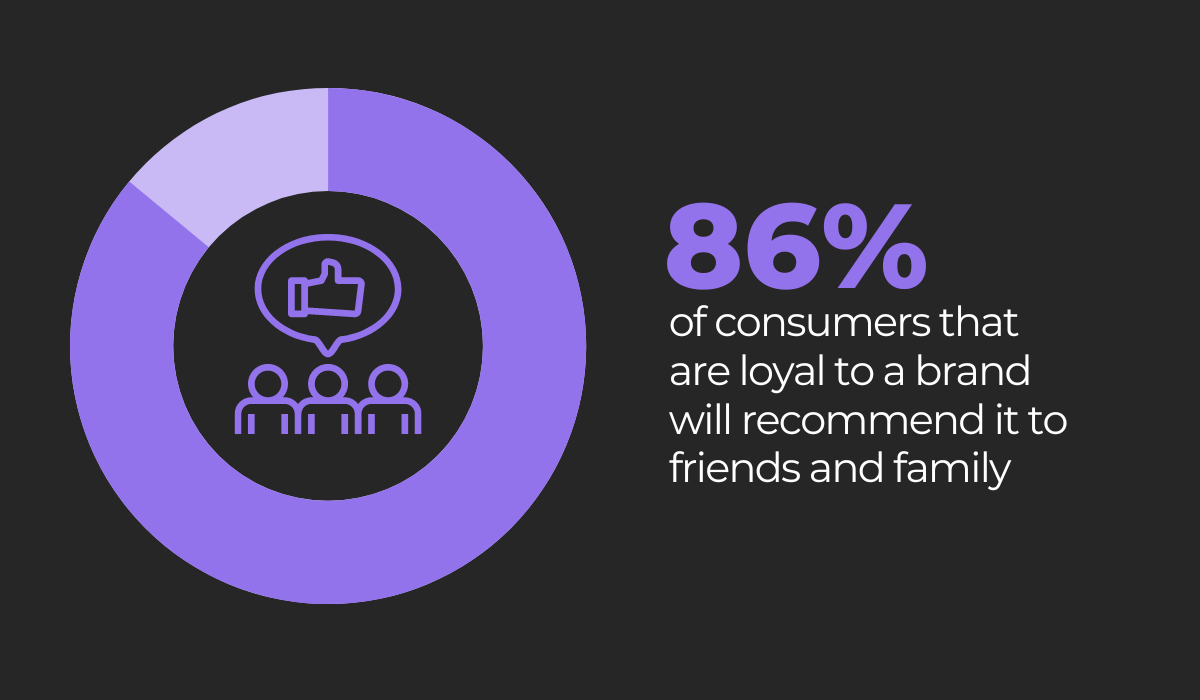
In today’s competitive marketplace, thorougly testing a mobile app is necessary to provide a seamless experience to its users.
This practice is vital, as an untested app can lead to negative reviews, low adoption rates, and loss of revenue—as such, it’s essential to ensure that a mobile app goes through the testing process, helping create and deliver its best possible version.
This article highlights the importance of testing mobile applications and shows how the testing process helps create a quality product.
First, we cover how testing helps validate an app’s functionality.
Table of Contents
Ensuring the app is fully functional
When it comes to mobile apps, users expect nothing less than a fully functional experience, and the testing process is here to help ensure that an app works and performs as expected.
Whether it’s a game, a productivity app, or a social media platform, users want an app that works smoothly and does what it’s supposed to do—allowing them to accomplish their goals without frustration or much hassle.
The data backs this claim, with a survey by Dimensional Research finding that:
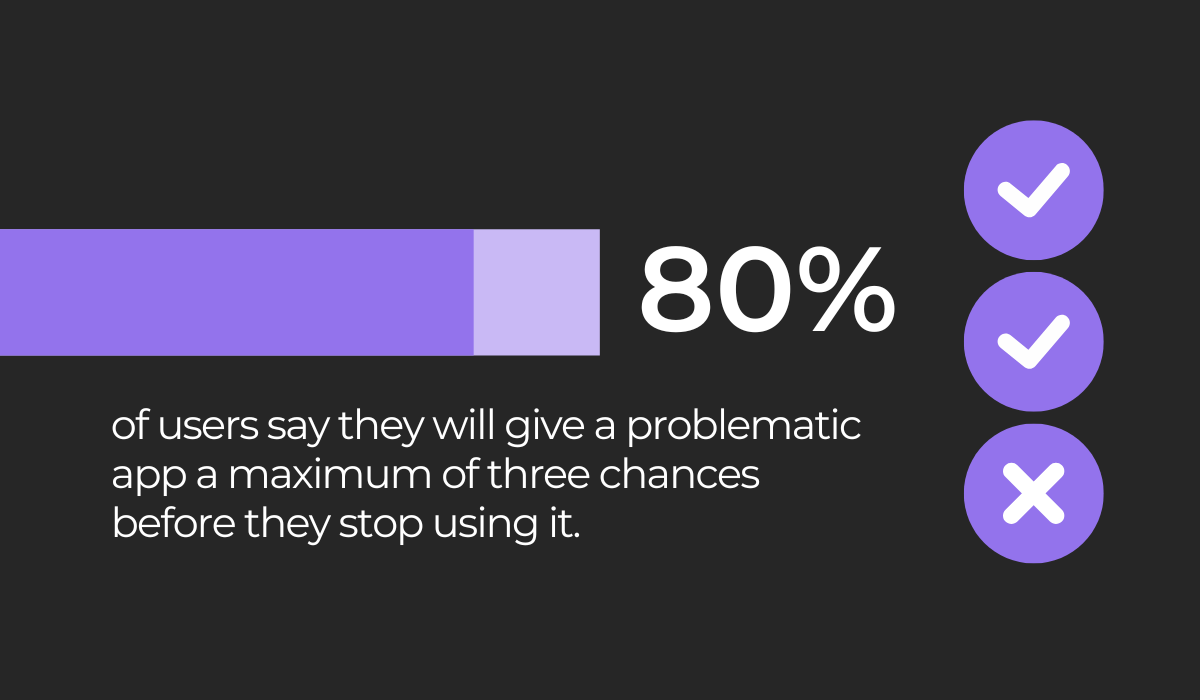
Moreover, over half of the participants in this survey stated that they give an app only two chances before abandoning it—making it vital to ensure an app functions well from the start.
The testing process helps fix any defects that introduce problems in the app’s behavior by testing its various features and functions through functional testing.
As you can see, this type of testing focuses on the particular features of a software application, and testers usually perform it manually before conducting various non-functional tests.
Some examples of functional testing include:
- Unit testing
- Smoke testing
- Sanity testing
- Integration testing
- User acceptance testing
This type of testing is an essential part of the testing process as it evaluates a product’s functional requirements—referring to the specific features and capabilities that the app must have in order to meet the user’s needs.
There are a lot of functional requirements that testers should verify, and some of them include:
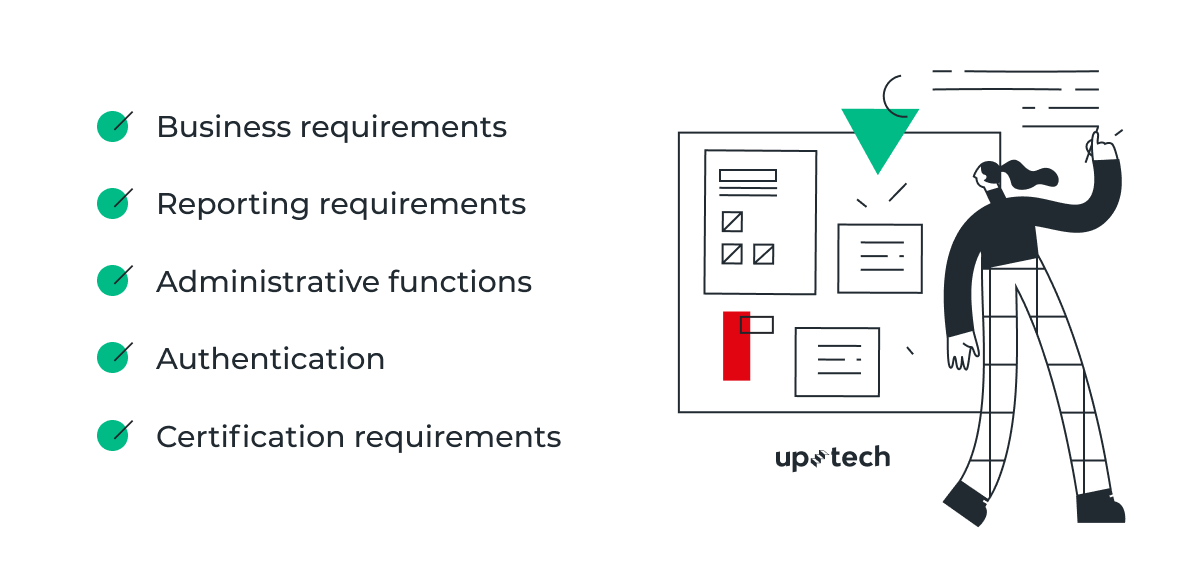
In other words, functional requirements are the goals that a software application must achieve to be considered fully functional—testing these requirements ensures that the app is working as intended and that users are able to use all its features.
To illustrate this point, consider the following example.

Get unreal data to fix real issues in your app & web.
When someone uses a food delivery app, they expect it to be able to accept and process orders, provide real-time updates on the order status, and allow users to track the delivery.
If any of these features don’t work properly, the app becomes less functional and useful to the user, potentially leading to them abandoning it altogether.
Therefore, providing users with a mobile app that operates as it should is essential for user satisfaction and long-term success—by thoroughly testing its functionality, you can help guarantee it works well.
Strengthening the app’s security
App testing is not only important for ensuring that an app works as it should, but it can also play a critical role in strengthening the app’s security.
Guaranteeing security is a common challenge in testing mobile applications, and a Guardsquare survey of over 500 mobile app security experts found that:
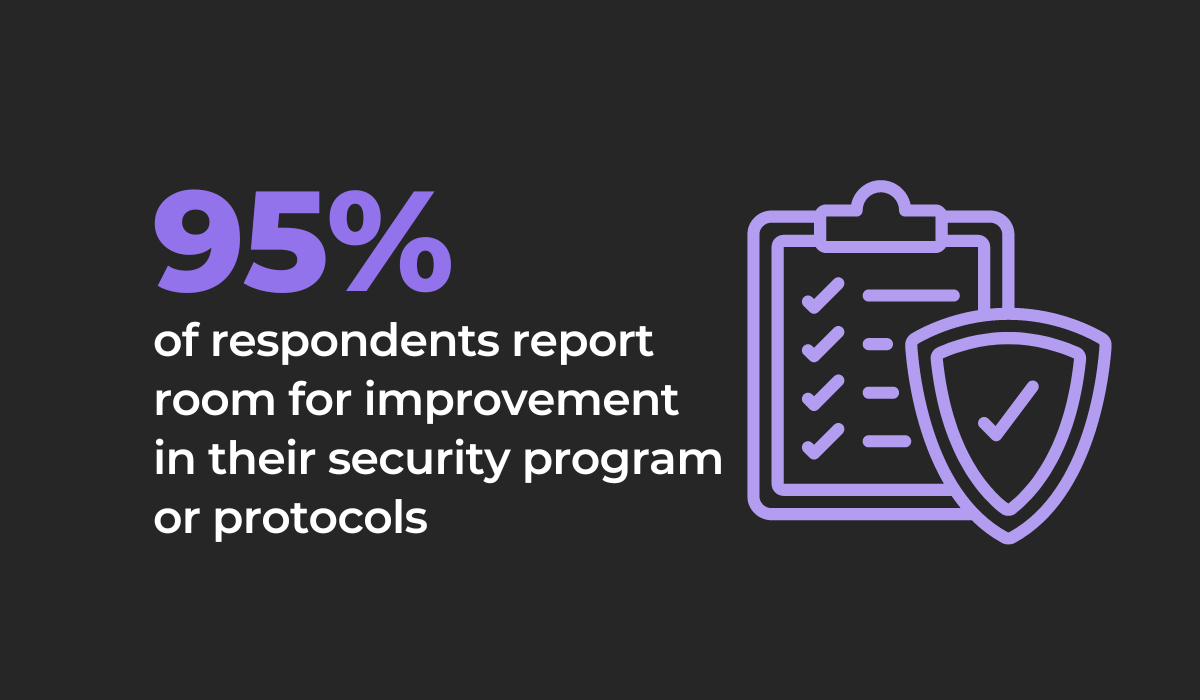
What’s more, almost all of these experts rely somewhat or solely on a mobile device’s operating system security for defense against exploits and keeping their app secure, even though about 40% of the development process is spent on ensuring an app is safe from attacks.
As you can see, creating a secure app is a challenging process, and you’d do well to have a thorough security testing process to help find vulnerabilities that malicious individuals can exploit.
The most straightforward way testers find vulnerabilities in an app is through penetration testing—a process where testers try to act like hackers to find any weaknesses and assess the threat of damage from potential attackers.
Penetration testing has multiple benefits for an app’s security, such as:
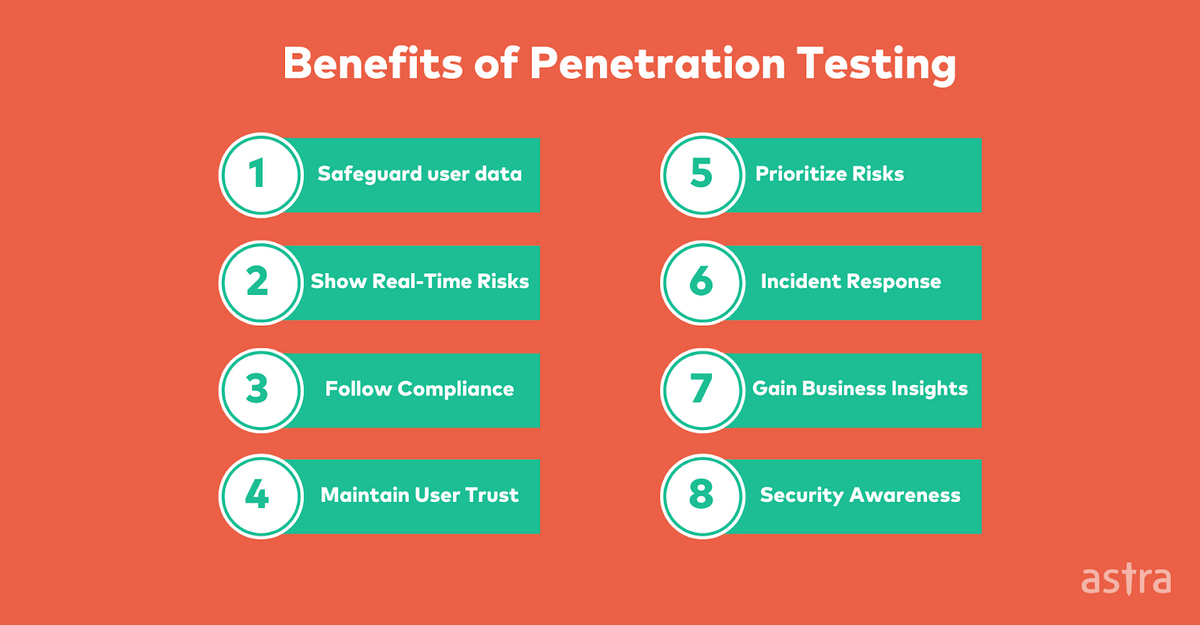
By simulating an attack, penetration testing can help organizations better understand their security vulnerabilities and make informed decisions about how to address those vulnerabilities—helping prevent data breaches, protect user data, and maintain the organization’s reputation and trust.
There are several other types of security testing practices QA and testing teams might want to consider implementing, such as
- Vulnerability scanning
- Risk assessment
- Security auditing
- Source code review
Using all of these testing practices and having a well-thought out and comprehensive testing process is one of the only ways to protect an app’s users and a business from expensive data breaches.
And these breaches are no laughing matter—just look at the example below from a 2018 attack on Marriott International, where:

In this massive breach, hackers were able to take control of the reservation system of all Starwood hotels and access information such as guest names, emails, and phone numbers, passport details, and credit card information.
Considering the serious consequences of weak app security for your business and user privacy, you can see how testing an app for exploits and vulnerabilities is key for a safe and successful product.

Enhancing the user interface
After an app’s functionality and security are addressed, testing its user interface (UI) is vital for making an app that provides an enjoyable experience to users.
An app’s UI is the primary means by which users interact with the app.
As such, an intuitive and visually appealing UI can help users navigate the app quickly and efficiently, while a poorly designed UI can lead to confusion, frustration, and ultimately, users abandoning the app.
To assess whether an app’s interface is designed well, testers conduct UI testing, helping improve the look and feel of an app by testing things like:
- The position and size of its elements
- Loading times and other performance issues
- The text font, its color, and size
- The alignment of images
- The app’s navigation
By thoroughly testing these UI elements, testers can ensure that the app provides a positive user experience (UX), leading to greater user satisfaction, ease-of-use, and many other benefits, some of which are illustrated below.
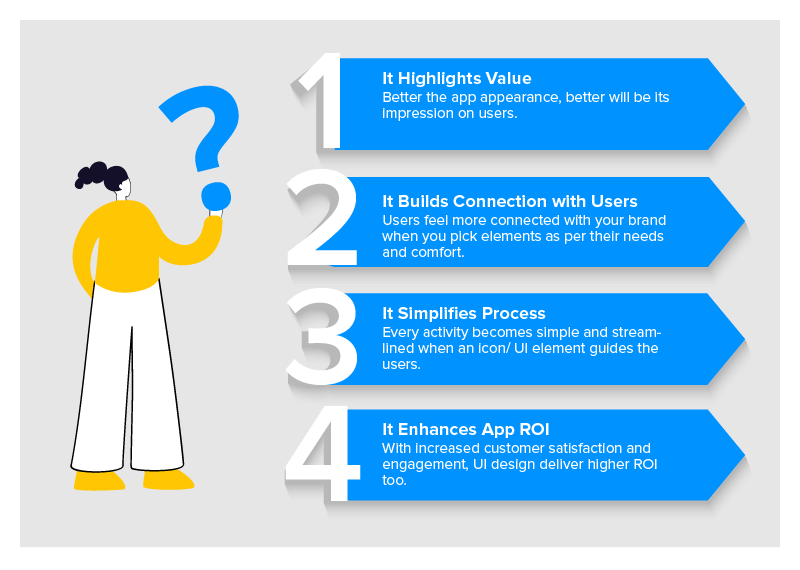
Not addressing UI design issues, on the other hand, can negatively impact a business if the users find it tedious to use an application, potentially leading to a loss of customers if the product is left unusable due to these problems.
One example of how a poorly designed user interface can make a product tough to use is the failed 2013 launch of the healthcare.gov website.
Beside the website’s technical issues, a major problem with this product was its confusing design—making it difficult for users to navigate through the website and understand what they are being offered before signing up.
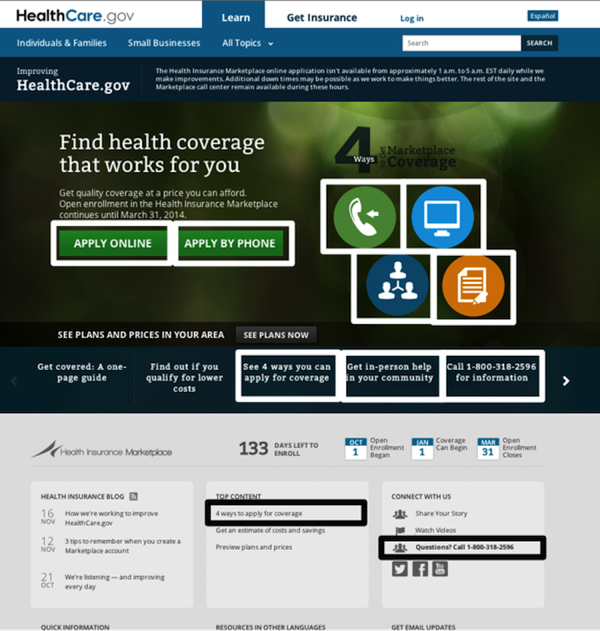
As you can see from the above image, one of the UI issues of the healthcare website was its complexity and redundant elements, such as having four different links and buttons to call for any questions or information and an excessive amount of buttons for applying for the program.
This unnecessary visual complexity contributed to the overall low enrolment numbers for the program, making this software product fail to fulfill its purpose and frustrate users instead.
Overall, an appealing and well-designed interface is a great way to attract users and provide them with a pleasant UX, and having testers and real users evaluate your app’s UI is key to accomplishing this goal.
Encouraging customer loyalty
Maintaining long-term success for a mobile app relies heavily on cultivating a loyal customer base, and an essential component of this process is software testing.
In a market with millions of available apps, competition is intense, but thoroughly tested, quality apps can help attract loyal users.
However, encouraging customer loyalty is a tough process, with users becoming loyal supporters of a brand if they believe their product displays a combination of these three characteristics:
Software testing directly addresses all three of these factors as they are closely related to the key objectives of testing.
Testing plays a significant role in increasing the perceived value of an application by ensuring that it meets the user’s expectations and needs.
A well-planned testing process can help testers guarantee that the application’s critical functions and features, which set it apart from the competition, are working as intended.
Furthermore, through identifying and fixing bugs and other defects, QA and testing teams work together to create a product that meets a high standard of quality.
This is done through various testing activities, some of which we covered in the previous sections.
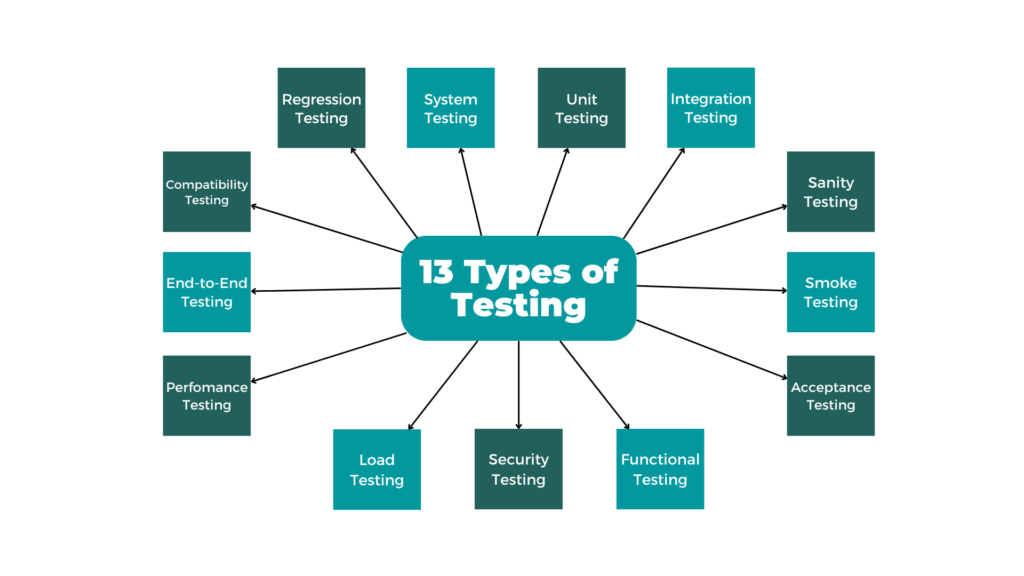
Through all of these activities, especially security testing, users can also gain better trust in an application, as they can rest assured that their sensitive information is kept safe in a secure and reliable environment.
As you can see, testing helps attract devoted customers, ones that will use an app regularly and help grow your company’s revenue by making repeat purchases—not only this, but satisfied users will oftentimes recommend a product to others and become its advocates.
In fact, according to data:
As you can see, loyal customers are eager to share their positive experiences using a product with others, creating word-of-mouth marketing that can act as a powerful tool for businesses leading to increased adoption and usage of the app by new customers.
Overall, thoroughly testing an app and giving users a high-quality product is another essential way testing benefits a company and its customers—helping make certain customers are satisfied with the app and encouraging their loyalty.
Increasing the return on investment
The testing process is of key importance when it comes to saving you valuable time and money—handling potential issues before an app’s release, when they become too expensive to fix.
Developing a mobile app can be a costly process for businesses, requiring significant investments in terms of time, money and resources—from hiring a development team, to the cost of bug fixing and various maintenance costs after the app is released.

What’s more, in many cases, businesses may not see a return on investment (ROI) for some time after the app is released, making it vital to create a high-quality app that has a better chance of success and release it on the market as soon as possible to start seeing returns.
Investing in an effective software testing process is a great way to help increase ROI.
This is especially the case when the testing process is introduced early in development and practiced continuously.
One way testing helps is by detecting and helping fix any issues early on—bugs have a way of becoming increasingly more complex and costly to fix if found later in the software development life cycle, so testing helps lower these costs substantially.
In addition, if left unchecked, the number of bugs present can start increasing and make it difficult to efficiently handle and resolve all of them, leading to more serious problems down the line.
As Frances Banks writes on Airbrake’s blog,
Bugs tend to multiply, so if they aren’t fixed as they come along, there will soon be many more. When there are multiple bugs, it’s harder to track the cause of the problem.
One way to streamline the bug detection process and catch as many bugs as possible is to use automated testing over manual testing—this practice is not only helpful at detecting bugs but is a great way to save money in the long run.
To illustrate our point, look at the following graph comparing the costs of manual and automated testing and their progress over time.
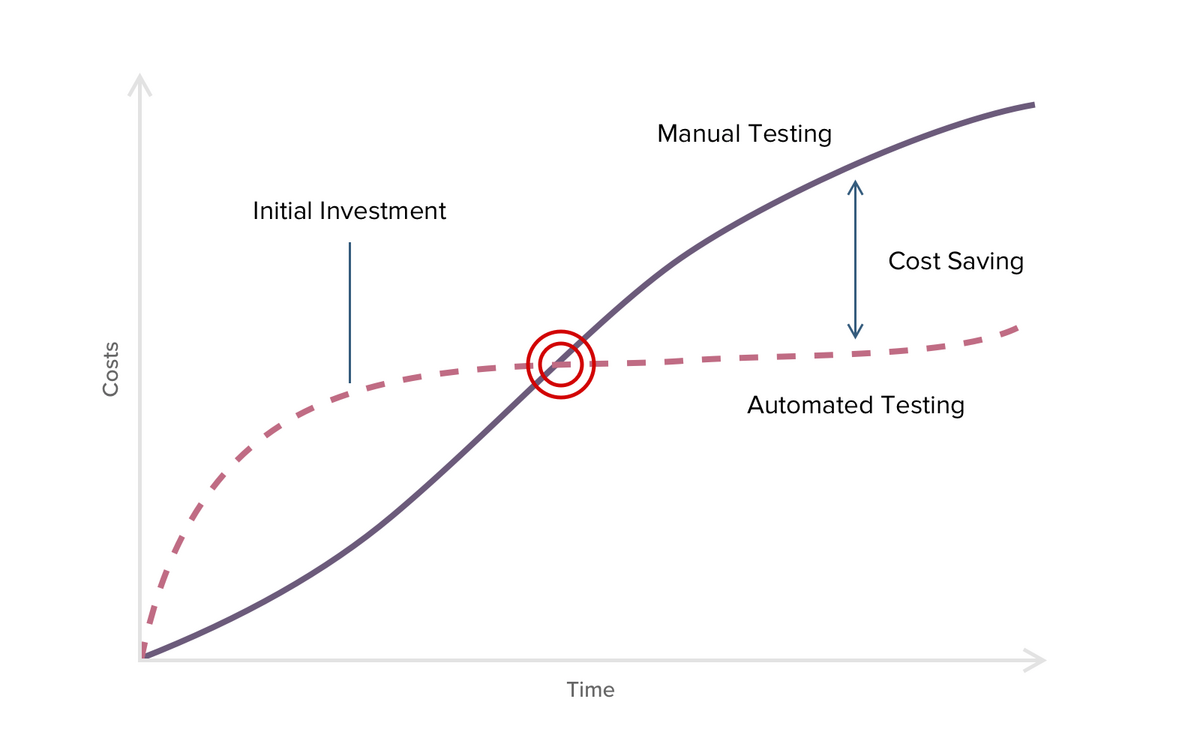
While automated testing might have higher initial costs, over time, this practice becomes very cost-effective as it requires less human effort and is more reliable than manual testing—efficiently and continuously detecting bugs, reducing costs and speeding up the time before the app hits the market.
So, we recommend investing in thorough testing of an app and using techniques like automated testing as a way to help prevent costly issues down the road while accelerating the testing process—ultimately leading to a higher ROI for a business.
Conclusion
In this article, we’ve explored why testing mobile apps is an essential practice in the development life cycle and how this process can help create a high-quality application that both benefits users and is profitable for your business.
We covered the importance of testing an app’s functionality, security, and UI, discussed how providing users with a pleasant experience can increase their loyalty to your brand, and showed you how focusing on testing from early on can improve your bottom line.
All in all, we hope that you now have a better understanding of the benefits of testing your mobile apps, and we strongly encourage you to consider investing more time and resources in this crucial part of the development process.

